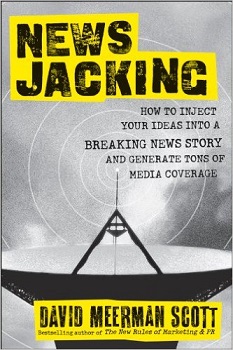 Independent funeral home directors own over four out of five funeral homes in the United States, and many of those businesses have been serving their area for generations. Most feel that they know their community, and certainly that’s true.
Independent funeral home directors own over four out of five funeral homes in the United States, and many of those businesses have been serving their area for generations. Most feel that they know their community, and certainly that’s true.
But most also feel that their community knows them, which, in today’s wired world, may not always be the case.
Funeral home owners and managers who engage their community digitally stand to protect their stature – and to attract business from other local providers.
Less Than the Bare Minimum: Your Website
The first digital step is a website, but even today more than half of U.S. businesses don’t have one.
If you fall into that category, now is the time to take care of it. But even if you’ve already got one, there’s a compelling reason to turn your attention to it over the course of the next few months.
We’ll explain why in a moment; but first, let us join the chorus of entrepreneurial coaches encouraging you to upgrade to modern website technology, which basically means creating a website that can be easily viewed on a phone.
If you’re reading this on a desktop or laptop, please grab hold of the edge of your browser and reduce its width. You’ll see how our site changes layout depending upon the size of the viewing area – from full-size to tablet to phone.
You have to have that feature today, because sixty percent of web viewing now takes place on a mobile device.
And perhaps the easiest way to get it is to use the free, open-source Content Management System (CMS) that powers high-profile sites such as Time Magazine and over sixty percent of all CMS-based websites worldwide: WordPress.
The same company who sold you your domain name probably offers hosting services, and many enable their customers to install WordPress with a single click. It comes with free templates to get you started, and there’s a vast community of developers who provide professional templates, plug-in functionalities and support to help you achieve the look and feel appropriate for your enterprise.
On your site you’ll describe your services, your history and your commitment to the community, and of course you’ll include your contact information.
The Bare Minimum: Your Website and Content
But that’s not enough.
You also have to develop a relationship with your visitor so yours is the funeral home they think of when the need arises.
To do that, you need to have additional content on your website. (We do this too – you’re reading it now!)
Some people coming to your site want to see your facilities, so of course you’ll post an extensive gallery for them. Some will want to read testimonials or case studies about your work, and when posting content like that, the more photos you can provide, the better. Others will be researching pre-need, so you’ll want to provide sales-oriented content for them. Needless to say, the whole point is to get them to call you so you can meet their need.
But you might consider the real purpose of your site to be something else entirely.
Here's a screen shot of the navigation bar of one mortician that gets it big time, Caitlin Doughty's The Order of the Good Death. Be sure to look into her blog and videos.
Now We’re Getting Somewhere: Your Website and Long-Term Business Development
Most funeral home owners and managers, as well as your industry press, would agree that, generally speaking, people don’t search the web for funeral services until the need arises.
A well-done website ought to capture your portion of that last-minute business
But as you know, by the time the need arises most people have already chosen the funeral home they’ll work with.
So the real purpose of your website might be thought of as developing relationships with the families you hope to serve – long before they need you.
And also long before they search for you.
Let your competitor believe that your market will always search for things like “funeral,” “cremation” or “cemetery.”
The fact is, your market will search for a whole host of things as their need approaches. And this is where your content can make all the difference.
Your Website Becomes a Useful Resource from a Trusted, Local Expert
The most obvious one is estate planning, and if you incorporate resources into your site, you can position yourself as a local authority. If you have relationships with local estate planning lawyers, you can link to them, quote them, or ask them to write a post for you.
Doing so conveys a clear message: you want to make sure that anyone coming to your site knows you care about their estate and that you want to help them maximize the ease and cost-effectiveness of their impending transfer of wealth.
The exact same thing could be said of living wills and medical directives.
These efforts can have a significant long-term impact on how many people know about you – and, more importantly, what they think of you.
It also lets you jump-start that familiarity in unexpected ways, since your only objective is to form a relationship that may eventually lead to business. And to do that, you can sometimes get creative.
News Jacking Digital Death
 Generation X is already involved in their parent’s elder care and final arrangements. Their kids, the Millennials, who watch this happen to their grandparents can’t help but contemplate that someday they’ll be doing the same thing for their parents.
Generation X is already involved in their parent’s elder care and final arrangements. Their kids, the Millennials, who watch this happen to their grandparents can’t help but contemplate that someday they’ll be doing the same thing for their parents.
But if it’s not happening now, most people prefer not to think about their loved ones’ impending demise.
Unless something unusual happens in the media that brings it to mind.
If something happens in the news and you write about it, when people subsequently search for that topic you can sometimes come up as a local source of information.
That’s called “news jacking.” When interest in some topic spikes, you write about it, and some people end up finding your content, which initiates or strengthens your relationship with them. We did this just last December, for example, when Bitcoin was in the news. We don’t have anything to do with Bitcoin, but we have everything to do with payments and money, so we wrote an article about Bitcoin.
You can do the same, and we’re going to help you.
In the last few months Facebook and Google both made headlines when they came up with policies controlling what happens to an account after someone dies.
This is exactly the sort of thing a funeral home director would want to news jack. All you must do is explain the policies and show that you care. Here’s a short example, which you are welcome to copy and paste on your site as if you had written it yourself:
As you can see, this kind of content truly shows that you care, which is really the main thing people want to know before doing business with any funeral director.
And since you’re in the caring business, you might want to make buying your services as easy as possible for your customer, and as risk-free as possible for you. That, of course, is where we come in…




